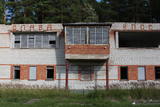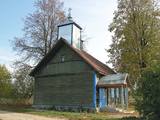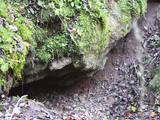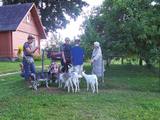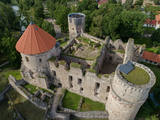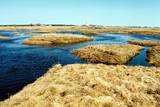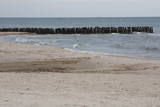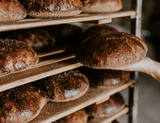| Nr | Nosaukums | Apraksts |
|---|---|---|
|
Skujnieku šautuve tikusi izmantota vasaras sporta nodarbību vajadzībām, šaušanas apmācībām un treniņiem. Ir atrodama informācija, ka arī mūsdienās šautuve brīžiem tiek izmantota militārām vajadzībām. Teritorijā saglabājusies 1982.gadā celtā vadības ēka ar uzrakstiem krievu valodā "Слава КПСС" (Slava Padomju Savienības Komunistiskajai partijai). Kur vēl šādus uzrakstus "brīvā dabā" ir iespējams redzēt?
|
||
|
Atrodas Vecpiebalgas centrā pie Inešu ceļa. Vieta, kas jāapmeklē katram savas valsts patriotam, jo šeit atdusas leģendārā romāna "Mērnieku laiki" autori - brāļi Reinis un Matīss Kaudzītes, sabiedriskais darbinieks un valodnieks Atis Kronvalds u.c. Kapos apskatāmi brāļu Kaudzīšu un A. Kronvalda pieminekļi. Tos atrast palīdzēs izvietotās kartes un norādes. |
||
|
Pie Inčupes ietekas paceļas ap 18 m augstā Baltā kāpa – Vidzemes piekrastes ainaviskākais vēja, smilšu un jūras veidojums. Kāpas apskates un aizsardzības nolūkā izveidota laipu taka (Saulrieta taka) ar skatu laukumu. Teritorija dienvidos no Inčupes atrodas Piejūras dabas parkā.
|
||
|
No Rīgas cauri vēsturiskajai Jūrmalas kūrortpilsētai maršruts ved uz kazu saimniecību, kur variet nogaršot sierus, kā arī ekskluzīvu saldējumu, kas pagatavots no kazas piena. Pēc tam apmeklējiet Dundagas pili un nogaršojiet vietējos piena produktus. Izbaudiet vietējās tradīcijas Rojā, ieturot zvejnieku maltīti un piedaloties dažādās atrakcijās. Tālāk maršruts ved uz Kolkas ragu un Ventspils pilsētu, tad - atpakaļ iekšzemē uz gleznaino Kuldīgu ar labi saglabāto koka arhitektūru. Pēc tam apmeklējiet skaisto Piena muižu, kur iespējams izbaudīt spa procedūras ar pienu. Piena muižā ir izveidots arī Piena muzejs, kur var izsekot piena ceļam no govs līdz galdam. Tālāk apmeklējiet saldumu ražotni Saldū, kur tiek izgatavotas tradicionālās "Gotiņas", savukārt pēc tam - Druvas saldējums. Dodieties apskatīt Jelgavu, apmeklējiet siera ražotni Elejā un, pirms atgriežaties Rīgā, apskatiet krāšņo Rundāles pili, kas tiek uzskatīta par Baltijas pērli. |
||
|
Viens no Eiropas iespaidīgākajiem krāteru laukiem. Galvenā krātera dziļums ir 22 m, diametrs – 110 m. Meteorīts nokritis pirms ~ 7,5 tūkstošiem gadu. |
||
|
Pļuskovas vecticībnieku kopienas lūgšanu nams celts 20. gs.
sākumā.
|
||
|
Rasnupļu (Opiņķu) pilskalns ir nozīmīga seno latgaļu apdzīvotā
vieta tā pakājē. Vīces strauta labajā krastā izveidojusies Velna ala,
saukta arī par Latgales mazo Staburagu. Nelielā ala (garums 3 m, platums
2 m, augstums 0,6 m) ir ģeoloģiski unikāla, jo izveidojusies,
dabiski sacementējoties kvartāra perioda grants iežiem. Šādas alas
Latvijā ir tikai divas. Alā ir 5 – 6 cm gari stalaktīti.
|
||
|
Iespaidīga smilšakmens atsegumu virkne, kas
izveidojās pēc 2005. g. orkāna.
|
||
|
The smoke sauna is an important part of everyday life in the Võru community in Estonia. It is the centre of a rich set of traditions including the actual bathing customs, the skills of making bathing whisks, building and repairing saunas, and smoking meat in the sauna. The sauna is a building or room heated by a stove covered with stones and with an elevated platform for sitting or lying. It has no chimney, and the smoke from the burning wood circulates in the room. People usually go into the sauna together and remain until they are sweating. Water is thrown on the heated stones to produce hot steam-laden air and bathers beat their bodies with whisks to remove dead skin and stimulate blood circulation. After sweating, whisking, relaxing and possible healing procedures, people cool themselves outside and rinse their bodies with water. The procedure is then repeated. The smoke sauna tradition is primarily a family custom, usually practised on Saturdays, but also before major festivals or family events. Its main function is to relax the body and mind. Families take turns hosting each other. Usually an older family member is responsible for preparing the sauna, accompanied by the children who gradually acquire the necessary skills. The smoke sauna tradition is part of the UNESCO Representative List of the Intangible Cultural Heritage of Humanity. |
||
|
Maršruts ved gar latviešu likteņupes Daugavas abiem krastiem. Tajā iekļautas tādas nozīmīgas vietas kā Koknese pilsdrupas un topošais Likteņdarzs. Ceļotājus priecēs gan brīnišķīgi upes skati, it īpaši izstaigājot Daugavas loku takas, gan seni pilskalni, latgaļu podniecības tradīcijas un citi amatu meistari. Daugavpils ar savu daudzveidīgo militāri industriālā mantojuma piedāvājumu un slavenā māksliniekka Marka Rotko mākslas centru. Iespēja zirga mugurā izstaigāt Daugavas krastus Baltkrievijas pierobežā. Bebrenē vērts nogaršot bebru dziedzeru uzlējumu, bet Dvietē uzzināt par Latvijas “piekto sezonu” jeb varenajiem plūdiem ik gadu. Maršruta informācija no Latvijas Lauku foruma |
||
|
Latgales lauku sētas „Mežmalas” saimnieki izveidojuši interesantu
19. un 20. gs. sadzīves lietu, darbarīku un iekārtu kolekciju,
piedāvā tūristiem pašiem izmēģināt roku skalu grozu pīšanā. Skalu
grozu, zāļu tēju iegāde. Enerģētiska meža taka pa priežu mežu.
Darba laiks: pēc pieteikuma |
||
|
Cēsu pils komplekss ir vieta, kur pagātne satiekas ar tagadni. |
||
|
Atrodas Daugavas labajā krastā pie Karikstes upītes ietekas Daugavā. Pili, no kuras mūsdienās ir saglabājusies tikai sienas drupas un pamati, Livonijas ordenis uzcēla 1224. gadā. To apdzīvoja līdz 17. gs. vidum, kad Poļu - zviedru kara laikā celtni sagrāva. Uz pilsdrupām paveras labs skats no ceļa (grantēts), kas aizlokas lejup pa Daugavas ielejas labo krastu. |
||
|
Igaunijas vizuāli izteiksmīgākais karsta lauks 125 ha platībā ar dažādām karsta procesu izpausmēm – pazemes strautiem, Jēlehtmes (Jõelähtme) upes sausgultni, karsta avotiem, piltuvēm, gravām, alām, pamatiežu atsegumiem, savdabīgu akmens „sēni” u.c. Pavasaros tas applūst, bet mazūdens periodā labi apskatāmas minētās karsta formas.
|
||
|
Kempings "Klintis" pašā jūras krastā pie Veczemju klintīm piedāvā autostāvvietu, telšu un piknika vietas ar soliņiem, galdiem, grilu, iespēju iegādāties malku ugunskura kurināšanai. Pieejamas labiekārtotas kempinga mājiņas, vietas kemperiem, kempinga viesiem pieejamas dušas un WC. Kempinga teritorijā darbojas restorāns "Rankuļrags" un vasaras kafejnīca. Mazajiem kempinga viesiem ierīkots rotaļu laukums. |
||
|
Viens no skaistākajiem Nīcas un plašākas apkaimes dārziem, kas guvis nozīmīgas nominācijas Nīcas un Latvijas mēroga skaistāko daiļdārzu konkursos. Augi, kas stādīti atsevišķās grupās ir telpiski nodalīti viens no otra. Īpaši bagāta ir hostu kolekcija, kurā ir vairāk nekā 130 šķirņu. Arī bagāta kļavu sķirņu kolekcija (25). Dārza ainaviskumu papildina izraktais un labiekārotais dīķis. Apmeklētāji saimnieces pavadībā var iepazīt dārzu un noklausīties stāstu par dažādām augu sugām, šķirnēm, kā arī iegūt vērtīgus padomus dārza veidošanā. |
||
|
"Irbes šaurums” – īpaši nozīmīga teritorija putnu migrācijas laikā - biežāk sastopamās aizsargājamās putnu sugas – tumšā pīle, melnā pīle, kākaulis, mazais ķīris, brūnkakla un melnkakla gārgales, kā arī melnais alks. Teritorija atrodas iepretim Dundagas novadam un Ventspils novadam, tās platība ir 172 412 ha.
|
||
|
Atrodas Rēzeknē, Atbrīvošanas alejā 102. Muzeja ekspozīcija ir izvietota ēkā, kur līdz 2. pasaules karam darbojās Latgales centrālais muzejs. Te iepazīstama Rēzeknes vēsture septiņu gadsimtu garumā, kā arī liela Latgales novadam raksturīgā keramikas un tēlotājmākslas kolekcija. Ekspozīcijā „Māla un uguns pārvērtību radīts brīnums” var iepazīties ar keramikas rašanās un attīstības vēsturi. Savukārt podnieku sētās un darbnīcās var vērot māla izstrādājumu tapšanas (tiek pielietotas senās podniecības tradīcijas) procesu. Pie muzeja uzstādīts piemineklis izcilajam Latgales dzejniekam Antonam Kūkojam (1940 – 2007). |
||
|
Labi aplūkojama (neliela izmēra vienstāvu ēka) no Klajumu vējdzirnavu puses. Baptistu draudze Jūrmalciemā dibināta 1933. gadā. |
||
|
SIA N. Bomja maiznīca „Lielezers” atrodas Limbažos. Uzņēmums dibināts 1991. gadā. Maiznīca piedāvā dažāda veida rudzu maizes, kviešu maizes un konditorejas izstrādājumus. Maiznīcas “Lielezers“ lepnums ir īsta rudzu maize un sadskābmaize, kas ceptas pēc ilgas un darbietilpīgas tehnoloģijas. Pašu dzirnavās tiek malti Latvijā audzēti rudzu un kviešu milti, bet plaucējumi tiek diennakti nogatavināti pašu darinātajos apses koka kubuliņos un raudzēti ar ieraugu. Klaipus dala un veido tikai ar rokām. Maizes ražošanu vada pieredzes bagāti maiznieka amata meistari ar palīgiem - maiznieka amata zeļļiem. Tiek piedāvāts ražotnes apmeklējums un tikko ceptas maizes degustācija. |
||
